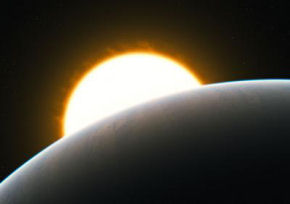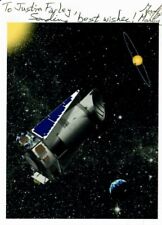
Astronomers at the European Southern Observatory (ESO) have measured a superstorm for the first time in the atmosphere of the exoplanet HD209458b, where carbon monoxide winds blow at up to 10,000 km per hour from the hot day side to the cooler night side of the planet.
“HD209458b is definitely not a place for the faint-hearted. By studying the poisonous carbon monoxide gas with great accuracy we found evidence for a super wind, blowing at a speed of 5,000 to 10,000 km per hour,” says Ignas Snellen, who led the team of astronomers.
HD209458b is about 60 percent the mass of Jupiter and orbits a solar-like star located 150 light-years from Earth towards the constellation of Pegasus. Circling at a distance of only one twentieth the Sun-Earth distance, the planet is heated intensely by its parent star, and has a surface temperature of about 1,000 degrees Celsius on the hot side. But the planet always has the same side to its star, making one side very hot and the other much cooler. “On Earth, big temperature differences inevitably lead to fierce winds, and as our new measurements reveal, the situation is no different on HD209458b,” says team member Simon Albrecht.
The astronomers achieved several other firsts. They directly measured the velocity of the exoplanet as it orbited its home star by measuring the wobble of the star, and assuming a mass for the star, were able to measure the motion of the planet as well, and thus determine both the mass of the star and of the planet.
Also for the first time, the astronomers measured how much carbon is present in the atmosphere of this planet. “It seems that H209458b is actually as carbon-rich as Jupiter and Saturn. This could indicate that it was formed in the same way,” says Snellen. “In the future, astronomers may be able to use this type of observation to study the atmospheres of Earth-like planets, to determine whether life also exists elsewhere.”
Related:
Exoplanet orbit tracked
Astronomers cop an eyeful of giant planet’s demise
CO2 detected on distant extrasolar planet


















Comments are closed.